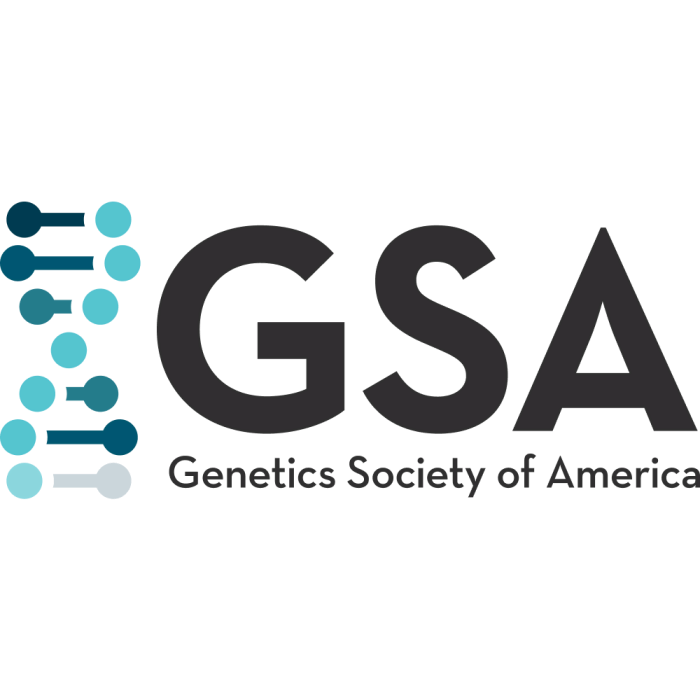Open Access


Genetics, volume 193, issue 4, pages 1025-1064
DNA Repair Mechanisms and the Bypass of DNA Damage in Saccharomyces cerevisiae
1
Centre National de la Recherche Scientifique UPR4301 Centre de Biophysique Moléculaire, 45071 Orléans Cedex 02, France
|
2
Department of Molecular Genetics and Microbiology, Duke University Medical Center, Durham, North Carolina 27710
|
Publication type: Journal Article
Publication date: 2013-04-01
PubMed ID:
23547164
Genetics
Abstract
DNA repair mechanisms are critical for maintaining the integrity of genomic DNA, and their loss is associated with cancer predisposition syndromes. Studies in Saccharomyces cerevisiae have played a central role in elucidating the highly conserved mechanisms that promote eukaryotic genome stability. This review will focus on repair mechanisms that involve excision of a single strand from duplex DNA with the intact, complementary strand serving as a template to fill the resulting gap. These mechanisms are of two general types: those that remove damage from DNA and those that repair errors made during DNA synthesis. The major DNA-damage repair pathways are base excision repair and nucleotide excision repair, which, in the most simple terms, are distinguished by the extent of single-strand DNA removed together with the lesion. Mistakes made by DNA polymerases are corrected by the mismatch repair pathway, which also corrects mismatches generated when single strands of non-identical duplexes are exchanged during homologous recombination. In addition to the true repair pathways, the postreplication repair pathway allows lesions or structural aberrations that block replicative DNA polymerases to be tolerated. There are two bypass mechanisms: an error-free mechanism that involves a switch to an undamaged template for synthesis past the lesion and an error-prone mechanism that utilizes specialized translesion synthesis DNA polymerases to directly synthesize DNA across the lesion. A high level of functional redundancy exists among the pathways that deal with lesions, which minimizes the detrimental effects of endogenous and exogenous DNA damage.
Citations by journals
|
2
4
6
8
10
12
14
16
18
|
|
|
DNA Repair

|

DNA Repair
17 publications, 9.34%
|
|
Nucleic Acids Research

|

Nucleic Acids Research
13 publications, 7.14%
|
|
Genetics
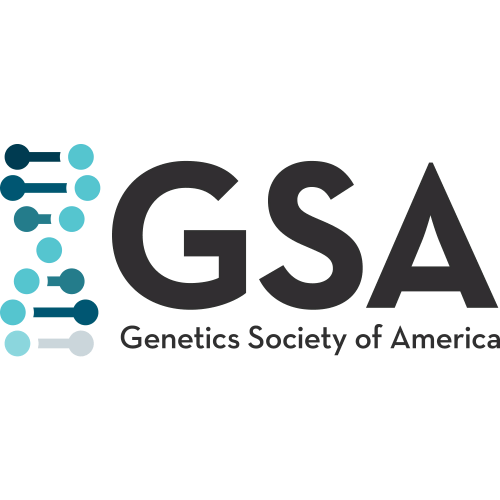
|

Genetics
10 publications, 5.49%
|
|
PLoS Genetics
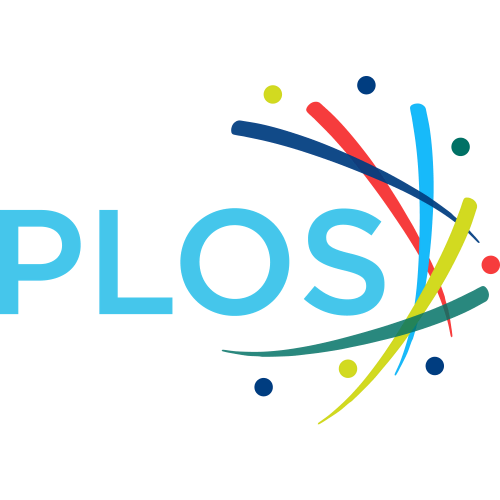
|

PLoS Genetics
7 publications, 3.85%
|
|
Journal of Fungi

|

Journal of Fungi
5 publications, 2.75%
|
|
Genes

|

Genes
5 publications, 2.75%
|
|
PLoS ONE

|

PLoS ONE
4 publications, 2.2%
|
|
Frontiers in Genetics

|

Frontiers in Genetics
3 publications, 1.65%
|
|
Current Genetics

|

Current Genetics
3 publications, 1.65%
|
|
Scientific Reports

|

Scientific Reports
3 publications, 1.65%
|
|
Journal of Biological Chemistry
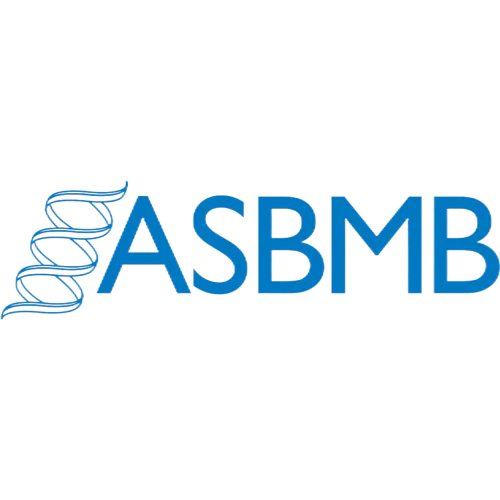
|

Journal of Biological Chemistry
3 publications, 1.65%
|
|
Critical Reviews in Biochemistry and Molecular Biology

|

Critical Reviews in Biochemistry and Molecular Biology
3 publications, 1.65%
|
|
Oxidative Medicine and Cellular Longevity

|

Oxidative Medicine and Cellular Longevity
3 publications, 1.65%
|
|
eLife
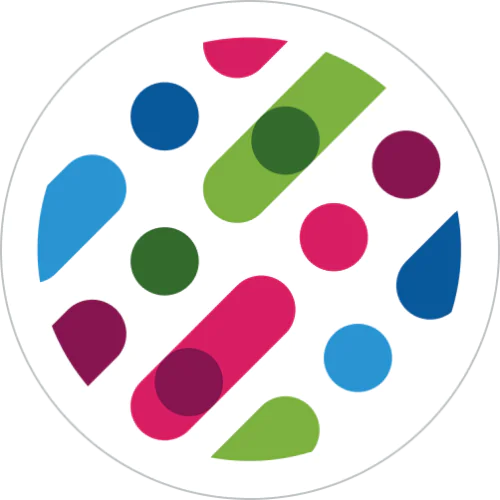
|

eLife
3 publications, 1.65%
|
|
Microbiological Research

|

Microbiological Research
3 publications, 1.65%
|
|
BMC Genomics

|

BMC Genomics
2 publications, 1.1%
|
|
Biomolecules

|

Biomolecules
2 publications, 1.1%
|
|
International Journal of Molecular Sciences

|

International Journal of Molecular Sciences
2 publications, 1.1%
|
|
Nature Communications

|

Nature Communications
2 publications, 1.1%
|
|
Molecular Microbiology

|

Molecular Microbiology
2 publications, 1.1%
|
|
G3: Genes, Genomes, Genetics

|

G3: Genes, Genomes, Genetics
2 publications, 1.1%
|
|
FEMS Microbiology Reviews

|

FEMS Microbiology Reviews
2 publications, 1.1%
|
|
mBio

|

mBio
2 publications, 1.1%
|
|
mSphere

|

mSphere
2 publications, 1.1%
|
|
Cellular Microbiology

|

Cellular Microbiology
2 publications, 1.1%
|
|
Proceedings of the National Academy of Sciences of the United States of America

|

Proceedings of the National Academy of Sciences of the United States of America
2 publications, 1.1%
|
|
Journal of Cell Science

|

Journal of Cell Science
1 publication, 0.55%
|
|
Zebrafish
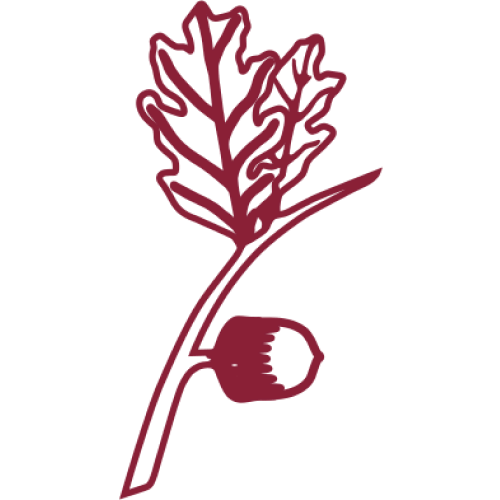
|

Zebrafish
1 publication, 0.55%
|
|
Nucleus

|

Nucleus
1 publication, 0.55%
|
|
2
4
6
8
10
12
14
16
18
|
Citations by publishers
|
5
10
15
20
25
30
35
|
|
|
Elsevier

|

Elsevier
35 publications, 19.23%
|
|
Springer Nature

|

Springer Nature
18 publications, 9.89%
|
|
Oxford University Press

|

Oxford University Press
18 publications, 9.89%
|
|
Multidisciplinary Digital Publishing Institute (MDPI)

|

Multidisciplinary Digital Publishing Institute (MDPI)
17 publications, 9.34%
|
|
Public Library of Science (PLoS)

|

Public Library of Science (PLoS)
13 publications, 7.14%
|
|
Genetics Society of America

|

Genetics Society of America
12 publications, 6.59%
|
|
Wiley

|

Wiley
10 publications, 5.49%
|
|
American Society for Microbiology

|

American Society for Microbiology
6 publications, 3.3%
|
|
Taylor & Francis

|

Taylor & Francis
5 publications, 2.75%
|
|
Frontiers Media S.A.

|

Frontiers Media S.A.
5 publications, 2.75%
|
|
American Chemical Society (ACS)

|

American Chemical Society (ACS)
4 publications, 2.2%
|
|
American Society for Biochemistry and Molecular Biology

|

American Society for Biochemistry and Molecular Biology
3 publications, 1.65%
|
|
Hindawi Limited

|

Hindawi Limited
3 publications, 1.65%
|
|
eLife Sciences Publications

|

eLife Sciences Publications
3 publications, 1.65%
|
|
Proceedings of the National Academy of Sciences (PNAS)

|

Proceedings of the National Academy of Sciences (PNAS)
2 publications, 1.1%
|
|
The Company of Biologists

|

The Company of Biologists
1 publication, 0.55%
|
|
Mary Ann Liebert

|

Mary Ann Liebert
1 publication, 0.55%
|
|
Neoplasia Press
|
Neoplasia Press, 1, 0.55%
Neoplasia Press
1 publication, 0.55%
|
|
Royal Society of Chemistry (RSC)

|

Royal Society of Chemistry (RSC)
1 publication, 0.55%
|
|
American Association for the Advancement of Science (AAAS)

|

American Association for the Advancement of Science (AAAS)
1 publication, 0.55%
|
|
Annual Reviews

|

Annual Reviews
1 publication, 0.55%
|
|
Academia Brasileira de Ciencias
|
Academia Brasileira de Ciencias, 1, 0.55%
Academia Brasileira de Ciencias
1 publication, 0.55%
|
|
American Society for Cell Biology (ASCB)
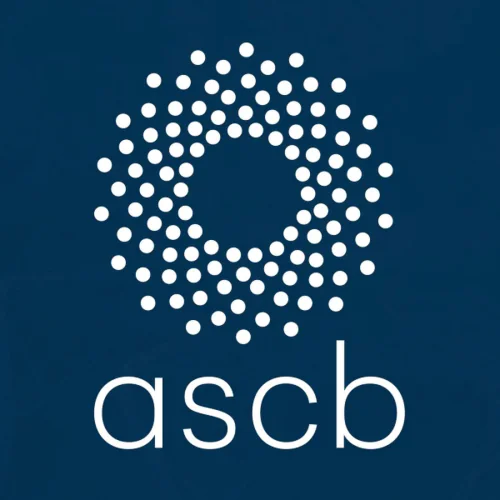
|

American Society for Cell Biology (ASCB)
1 publication, 0.55%
|
|
5
10
15
20
25
30
35
|
- We do not take into account publications that without a DOI.
- Statistics recalculated only for publications connected to researchers, organizations and labs registered on the platform.
- Statistics recalculated weekly.
{"yearsCitations":{"type":"bar","data":{"show":true,"labels":[2013,2014,2015,2016,2017,2018,2019,2020,2021,2022,2023,2024],"ids":[0,0,0,0,0,0,0,0,0,0,0,0],"codes":[0,0,0,0,0,0,0,0,0,0,0,0],"imageUrls":["","","","","","","","","","","",""],"datasets":[{"label":"Citations number","data":[8,14,18,14,20,17,18,20,20,14,13,6],"backgroundColor":["#3B82F6","#3B82F6","#3B82F6","#3B82F6","#3B82F6","#3B82F6","#3B82F6","#3B82F6","#3B82F6","#3B82F6","#3B82F6","#3B82F6"],"percentage":["4.4","7.69","9.89","7.69","10.99","9.34","9.89","10.99","10.99","7.69","7.14","3.3"],"barThickness":null}]},"options":{"indexAxis":"x","maintainAspectRatio":true,"scales":{"y":{"ticks":{"precision":0,"autoSkip":false,"font":{"family":"Montserrat"},"color":"#000000"}},"x":{"ticks":{"stepSize":1,"precision":0,"font":{"family":"Montserrat"},"color":"#000000"}}},"plugins":{"legend":{"position":"top","labels":{"font":{"family":"Montserrat"},"color":"#000000"}},"title":{"display":true,"text":"Citations per year","font":{"size":24,"family":"Montserrat","weight":600},"color":"#000000"}}}},"journals":{"type":"bar","data":{"show":true,"labels":["DNA Repair","Nucleic Acids Research","Genetics","PLoS Genetics","Journal of Fungi","Genes","PLoS ONE","Frontiers in Genetics","Current Genetics","Scientific Reports","Journal of Biological Chemistry","Critical Reviews in Biochemistry and Molecular Biology","Oxidative Medicine and Cellular Longevity","eLife","Microbiological Research","BMC Genomics","Biomolecules","International Journal of Molecular Sciences","Nature Communications","Molecular Microbiology","G3: Genes, Genomes, Genetics","FEMS Microbiology Reviews","mBio","mSphere","Cellular Microbiology","Proceedings of the National Academy of Sciences of the United States of America","Journal of Cell Science","Zebrafish","Nucleus"],"ids":[13424,23904,10675,785,3021,8879,24963,13242,16818,13767,19451,19938,11615,24138,4808,7708,13780,14627,3231,2811,14038,22783,9121,262,5958,306,21886,915,5407],"codes":[0,0,0,0,0,0,0,0,0,0,0,0,0,0,0,0,0,0,0,0,0,0,0,0,0,0,0,0,0],"imageUrls":["\/storage\/images\/resized\/GDnYOu1UpMMfMMRV6Aqle4H0YLLsraeD9IP9qScG_medium.webp","\/storage\/images\/resized\/yNSijlgQghQF53VZuyFLA30CKDe4j3HK74Vtpnxa_medium.webp","\/storage\/images\/resized\/9EVpRifnnUJt6oHGY5GfsfSXTEz5wzbdgnZqiF5m_medium.webp","\/storage\/images\/resized\/PRGhlgB4OKRltSNtT39eA6wlnOTGRap1QQ6FQHih_medium.webp","\/storage\/images\/resized\/MjH1ITP7lMYGxeqUZfkt2BnVLgjkk413jwBV97XX_medium.webp","\/storage\/images\/resized\/MjH1ITP7lMYGxeqUZfkt2BnVLgjkk413jwBV97XX_medium.webp","\/storage\/images\/resized\/PRGhlgB4OKRltSNtT39eA6wlnOTGRap1QQ6FQHih_medium.webp","\/storage\/images\/resized\/4QWA67eqfcfyOiA8Wk7YnqroHFqQbTsmDJUYTCTg_medium.webp","\/storage\/images\/resized\/voXLqlsvTwv5p3iMQ8Dhs95nqB4AXOG7Taj7G4ra_medium.webp","\/storage\/images\/resized\/voXLqlsvTwv5p3iMQ8Dhs95nqB4AXOG7Taj7G4ra_medium.webp","\/storage\/images\/resized\/OuA6WPZekwEiUM99mP2pSqj4yHPxHezM6xgLhAjO_medium.webp","\/storage\/images\/resized\/5YZtvLvkPZuc2JHOaZsjCvGSHFCuC3drUwN3YAc5_medium.webp","\/storage\/images\/resized\/hqfzhQAjTGlNSRs6yzFNITgjSMm9Jr2QuotJHIvE_medium.webp","\/storage\/images\/resized\/eIZgkq1MRZyJ3hBkdupnUUv7wgB6zCl9D99SlPN5_medium.webp","\/storage\/images\/resized\/GDnYOu1UpMMfMMRV6Aqle4H0YLLsraeD9IP9qScG_medium.webp","\/storage\/images\/resized\/voXLqlsvTwv5p3iMQ8Dhs95nqB4AXOG7Taj7G4ra_medium.webp","\/storage\/images\/resized\/MjH1ITP7lMYGxeqUZfkt2BnVLgjkk413jwBV97XX_medium.webp","\/storage\/images\/resized\/MjH1ITP7lMYGxeqUZfkt2BnVLgjkk413jwBV97XX_medium.webp","\/storage\/images\/resized\/voXLqlsvTwv5p3iMQ8Dhs95nqB4AXOG7Taj7G4ra_medium.webp","\/storage\/images\/resized\/bRyGpdm98BkAUYiK1YFNpl5Z7hPu6Gd87gbIeuG3_medium.webp","\/storage\/images\/resized\/9EVpRifnnUJt6oHGY5GfsfSXTEz5wzbdgnZqiF5m_medium.webp","\/storage\/images\/resized\/yNSijlgQghQF53VZuyFLA30CKDe4j3HK74Vtpnxa_medium.webp","\/storage\/images\/resized\/VPE7q24PXoHr5SS2SqfEgxccSMUxWLfZINOX60uo_medium.webp","\/storage\/images\/resized\/VPE7q24PXoHr5SS2SqfEgxccSMUxWLfZINOX60uo_medium.webp","\/storage\/images\/resized\/bRyGpdm98BkAUYiK1YFNpl5Z7hPu6Gd87gbIeuG3_medium.webp","\/storage\/images\/resized\/mxFdPe9qujsfvfYfcN0QOclAiYORFb0xrRlwV8gs_medium.webp","\/storage\/images\/resized\/ko5EaisKGm66J1hHXtfEgVEeeWb9uOcMofpNuf0a_medium.webp","\/storage\/images\/resized\/Zy5YST233rzRbZP24I24MzZm64hz20ZV9qQopmMn_medium.webp","\/storage\/images\/resized\/5YZtvLvkPZuc2JHOaZsjCvGSHFCuC3drUwN3YAc5_medium.webp"],"datasets":[{"label":"","data":[17,13,10,7,5,5,4,3,3,3,3,3,3,3,3,2,2,2,2,2,2,2,2,2,2,2,1,1,1],"backgroundColor":["#3B82F6","#3B82F6","#3B82F6","#3B82F6","#3B82F6","#3B82F6","#3B82F6","#3B82F6","#3B82F6","#3B82F6","#3B82F6","#3B82F6","#3B82F6","#3B82F6","#3B82F6","#3B82F6","#3B82F6","#3B82F6","#3B82F6","#3B82F6","#3B82F6","#3B82F6","#3B82F6","#3B82F6","#3B82F6","#3B82F6","#3B82F6","#3B82F6","#3B82F6"],"percentage":[9.34,7.14,5.49,3.85,2.75,2.75,2.2,1.65,1.65,1.65,1.65,1.65,1.65,1.65,1.65,1.1,1.1,1.1,1.1,1.1,1.1,1.1,1.1,1.1,1.1,1.1,0.55,0.55,0.55],"barThickness":13}]},"options":{"indexAxis":"y","maintainAspectRatio":false,"scales":{"y":{"ticks":{"precision":0,"autoSkip":false,"font":{"family":"Montserrat"},"color":"#000000"}},"x":{"ticks":{"stepSize":null,"precision":0,"font":{"family":"Montserrat"},"color":"#000000"}}},"plugins":{"legend":{"position":"top","labels":{"font":{"family":"Montserrat"},"color":"#000000"}},"title":{"display":true,"text":"Journals","font":{"size":24,"family":"Montserrat","weight":600},"color":"#000000"}}}},"publishers":{"type":"bar","data":{"show":true,"labels":["Elsevier","Springer Nature","Oxford University Press","Multidisciplinary Digital Publishing Institute (MDPI)","Public Library of Science (PLoS)","Genetics Society of America","Wiley","American Society for Microbiology","Taylor & Francis","Frontiers Media S.A.","American Chemical Society (ACS)","American Society for Biochemistry and Molecular Biology","Hindawi Limited","eLife Sciences Publications","Proceedings of the National Academy of Sciences (PNAS)","The Company of Biologists","Mary Ann Liebert","Neoplasia Press","Royal Society of Chemistry (RSC)","American Association for the Advancement of Science (AAAS)","Annual Reviews","Academia Brasileira de Ciencias","American Society for Cell Biology (ASCB)"],"ids":[17,8,19,202,344,3356,11,142,18,208,40,2090,6921,6627,162,872,230,4513,123,189,6941,4529,4151],"codes":[0,0,0,0,0,0,0,0,0,0,0,0,0,0,0,0,0,0,0,0,0,0,0],"imageUrls":["\/storage\/images\/resized\/GDnYOu1UpMMfMMRV6Aqle4H0YLLsraeD9IP9qScG_medium.webp","\/storage\/images\/resized\/voXLqlsvTwv5p3iMQ8Dhs95nqB4AXOG7Taj7G4ra_medium.webp","\/storage\/images\/resized\/yNSijlgQghQF53VZuyFLA30CKDe4j3HK74Vtpnxa_medium.webp","\/storage\/images\/resized\/MjH1ITP7lMYGxeqUZfkt2BnVLgjkk413jwBV97XX_medium.webp","\/storage\/images\/resized\/PRGhlgB4OKRltSNtT39eA6wlnOTGRap1QQ6FQHih_medium.webp","\/storage\/images\/resized\/9EVpRifnnUJt6oHGY5GfsfSXTEz5wzbdgnZqiF5m_medium.webp","\/storage\/images\/resized\/bRyGpdm98BkAUYiK1YFNpl5Z7hPu6Gd87gbIeuG3_medium.webp","\/storage\/images\/resized\/VPE7q24PXoHr5SS2SqfEgxccSMUxWLfZINOX60uo_medium.webp","\/storage\/images\/resized\/5YZtvLvkPZuc2JHOaZsjCvGSHFCuC3drUwN3YAc5_medium.webp","\/storage\/images\/resized\/4QWA67eqfcfyOiA8Wk7YnqroHFqQbTsmDJUYTCTg_medium.webp","\/storage\/images\/resized\/iLiQsFqFaSEx6chlGQ5fbAwF6VYU3WWa08hkss0g_medium.webp","\/storage\/images\/resized\/OuA6WPZekwEiUM99mP2pSqj4yHPxHezM6xgLhAjO_medium.webp","\/storage\/images\/resized\/hqfzhQAjTGlNSRs6yzFNITgjSMm9Jr2QuotJHIvE_medium.webp","\/storage\/images\/resized\/eIZgkq1MRZyJ3hBkdupnUUv7wgB6zCl9D99SlPN5_medium.webp","\/storage\/images\/resized\/mxFdPe9qujsfvfYfcN0QOclAiYORFb0xrRlwV8gs_medium.webp","\/storage\/images\/resized\/ko5EaisKGm66J1hHXtfEgVEeeWb9uOcMofpNuf0a_medium.webp","\/storage\/images\/resized\/Zy5YST233rzRbZP24I24MzZm64hz20ZV9qQopmMn_medium.webp","","\/storage\/images\/resized\/leiAYcRDGTSl5B1eCnwpSGqmDEUEfDPPoYisFGhT_medium.webp","\/storage\/images\/resized\/s10mcsCV4OAUg9O2KrqOquQC0PhyLMI8hUUkuflM_medium.webp","\/storage\/images\/resized\/A7oGMwx1m3fFJlKJvQUVra8h0itmEa7JZW0q3Q0b_medium.webp","","\/storage\/images\/resized\/1pFWD0EzQnc5egizpglbyNDhAbHCAVj1O7hBchfP_medium.webp"],"datasets":[{"label":"","data":[35,18,18,17,13,12,10,6,5,5,4,3,3,3,2,1,1,1,1,1,1,1,1],"backgroundColor":["#3B82F6","#3B82F6","#3B82F6","#3B82F6","#3B82F6","#3B82F6","#3B82F6","#3B82F6","#3B82F6","#3B82F6","#3B82F6","#3B82F6","#3B82F6","#3B82F6","#3B82F6","#3B82F6","#3B82F6","#3B82F6","#3B82F6","#3B82F6","#3B82F6","#3B82F6","#3B82F6"],"percentage":[19.23,9.89,9.89,9.34,7.14,6.59,5.49,3.3,2.75,2.75,2.2,1.65,1.65,1.65,1.1,0.55,0.55,0.55,0.55,0.55,0.55,0.55,0.55],"barThickness":13}]},"options":{"indexAxis":"y","maintainAspectRatio":false,"scales":{"y":{"ticks":{"precision":0,"autoSkip":false,"font":{"family":"Montserrat"},"color":"#000000"}},"x":{"ticks":{"stepSize":null,"precision":0,"font":{"family":"Montserrat"},"color":"#000000"}}},"plugins":{"legend":{"position":"top","labels":{"font":{"family":"Montserrat"},"color":"#000000"}},"title":{"display":true,"text":"Publishers","font":{"size":24,"family":"Montserrat","weight":600},"color":"#000000"}}}}}
Metrics
Cite this
GOST |
RIS |
BibTex |
MLA
Cite this
GOST
Copy
Boiteux S., Jinks-Robertson S. DNA Repair Mechanisms and the Bypass of DNA Damage in Saccharomyces cerevisiae // Genetics. 2013. Vol. 193. No. 4. pp. 1025-1064.
GOST all authors (up to 50)
Copy
Boiteux S., Jinks-Robertson S. DNA Repair Mechanisms and the Bypass of DNA Damage in Saccharomyces cerevisiae // Genetics. 2013. Vol. 193. No. 4. pp. 1025-1064.
Cite this
RIS
Copy
TY - JOUR
DO - 10.1534/genetics.112.145219
UR - https://doi.org/10.1534%2Fgenetics.112.145219
TI - DNA Repair Mechanisms and the Bypass of DNA Damage in Saccharomyces cerevisiae
T2 - Genetics
AU - Boiteux, Serge
AU - Jinks-Robertson, Sue
PY - 2013
DA - 2013/04/01 00:00:00
PB - Genetics Society of America
SP - 1025-1064
IS - 4
VL - 193
PMID - 23547164
SN - 0016-6731
SN - 1943-2631
ER -
Cite this
BibTex
Copy
@article{2013_Boiteux,
author = {Serge Boiteux and Sue Jinks-Robertson},
title = {DNA Repair Mechanisms and the Bypass of DNA Damage in Saccharomyces cerevisiae},
journal = {Genetics},
year = {2013},
volume = {193},
publisher = {Genetics Society of America},
month = {apr},
url = {https://doi.org/10.1534%2Fgenetics.112.145219},
number = {4},
pages = {1025--1064},
doi = {10.1534/genetics.112.145219}
}
Cite this
MLA
Copy
Boiteux, Serge, and Sue Jinks-Robertson. “DNA Repair Mechanisms and the Bypass of DNA Damage in Saccharomyces cerevisiae.” Genetics, vol. 193, no. 4, Apr. 2013, pp. 1025-1064. https://doi.org/10.1534%2Fgenetics.112.145219.
